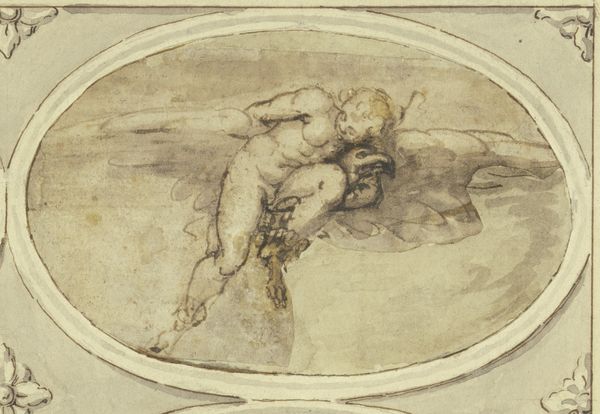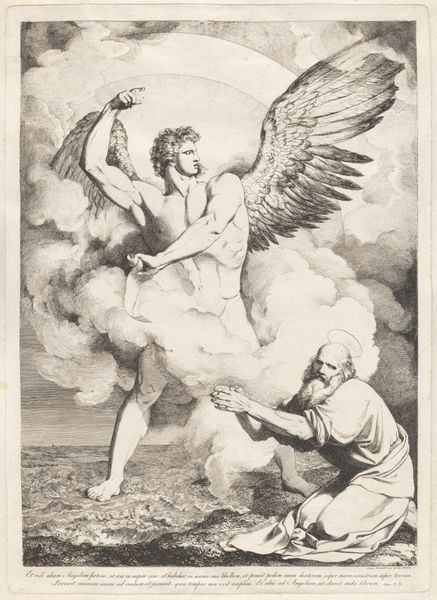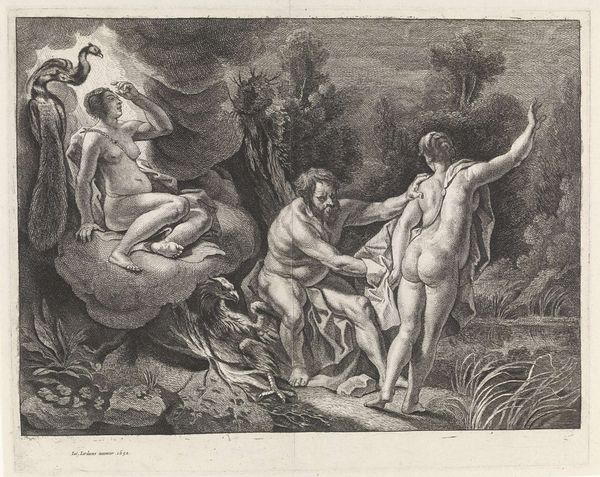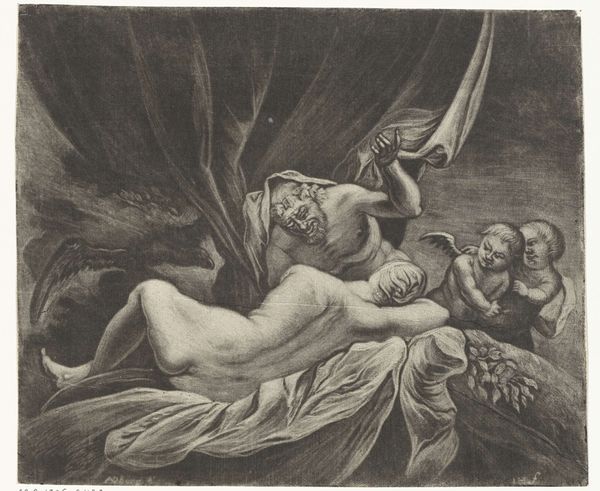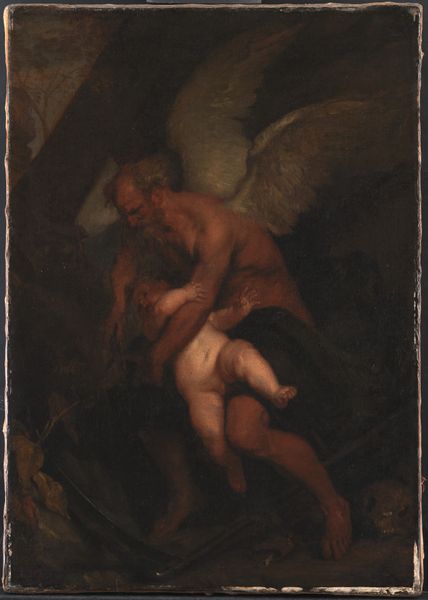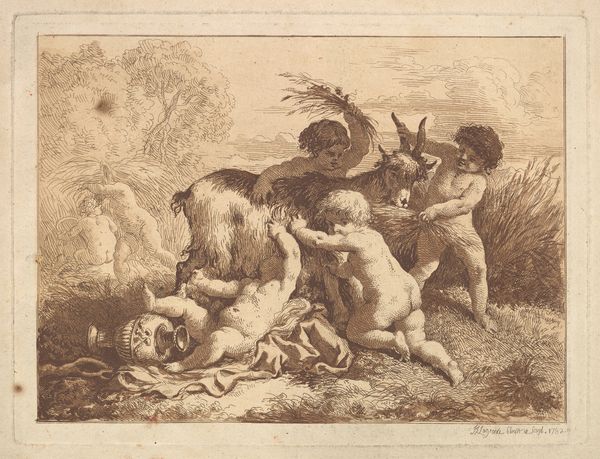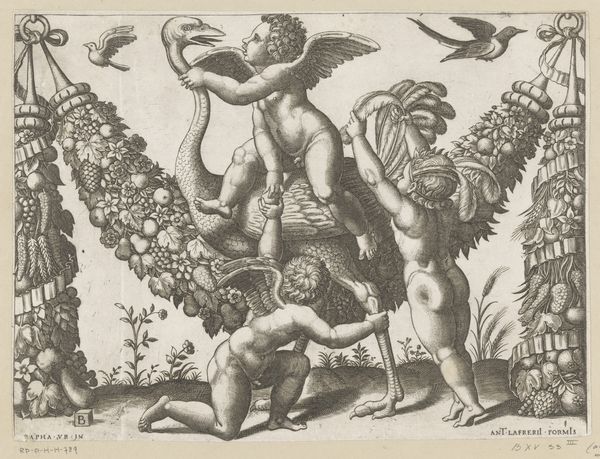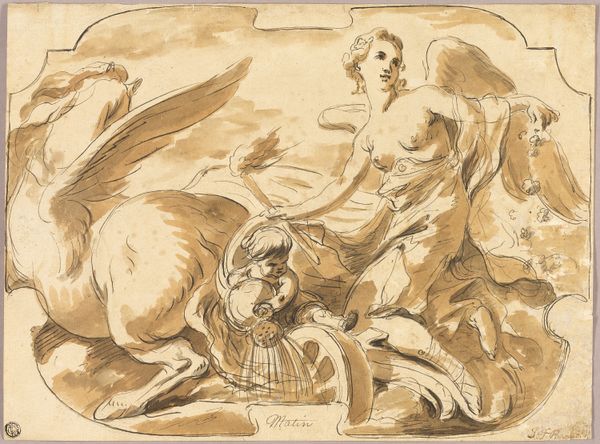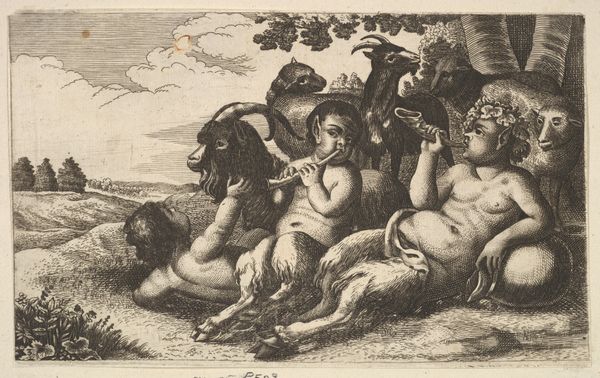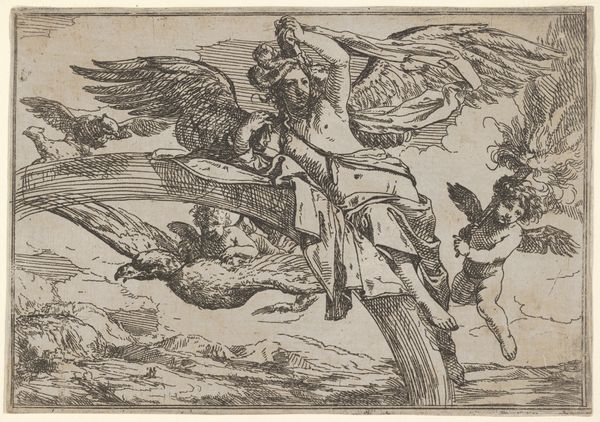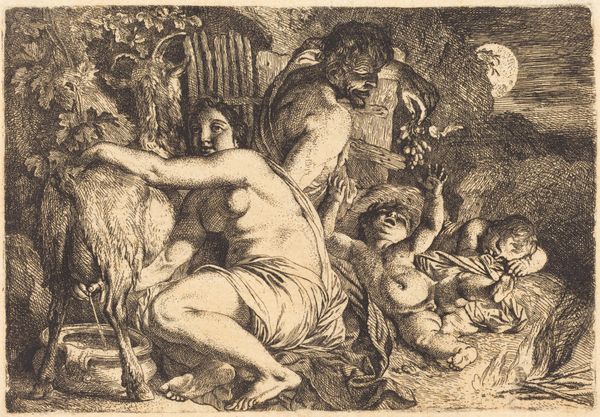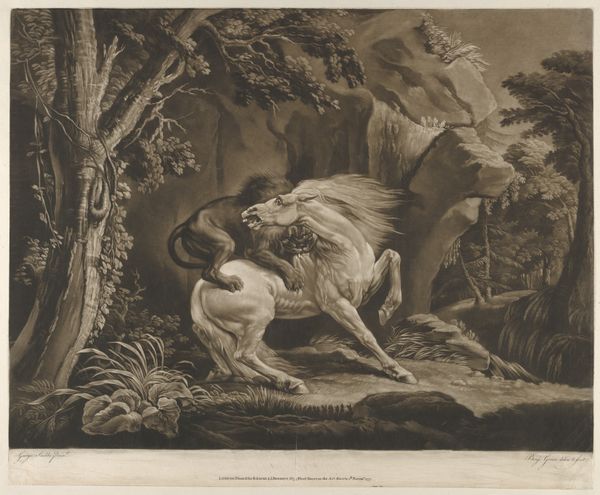
oil-paint
#
baroque
#
dutch-golden-age
#
oil-paint
#
dog
#
oil painting
#
genre-painting
Dimensions: height 139 cm, width 170 cm, depth 14 cm
Copyright: Rijks Museum: Open Domain
Curator: Jan Weenix's "A Dog with a dead Goose and Peacock (A Study of Game and Fruit)," from around 1700, is quite striking. The opulence, the texture... the scene seems designed to impress. What is your first reaction? Editor: The arrangement is what initially grabs me; the lifeless birds contrasted with the vibrant feathers of the peacock, along with the fresh fruit, creates this weird mix of abundance and mortality. What strikes you the most, as an art historian, when you look at this painting? Curator: Intriguing. The arrangement to me is a masterclass in pictorial structure. Weenix masterfully uses the still life to create depth through diagonal lines, observe how the peacock's plumage fans upwards, against the hanging goose. And notice the sharp, crisp detailing given to the animals, compared to the hazy background of the Italianate garden. What does that contrast imply? Editor: It seems like Weenix is inviting us to appreciate the materiality, as you mentioned earlier, of each object. Almost like a study in contrasts – life and death, detail and blur. Are you suggesting that he's deliberately drawing our attention to technique? Curator: Precisely. And if we consider the objects, the symbolic interplay is fascinating. Note the dog – often representing fidelity – posed next to the dead game. Consider the connotations of each bird: peacock, goose. What binaries are in effect here? Does this clash of symbolism and texture affect how you perceive the painting's message? Editor: It definitely does. I initially saw it as just a display of wealth, but now it feels much more layered and deliberate. Thank you for guiding me. I hadn’t appreciated the intricate arrangement nor the use of varied perspective that serves the visual purpose of drawing one into the artist's technical expertise.
Comments
No comments
Be the first to comment and join the conversation on the ultimate creative platform.

